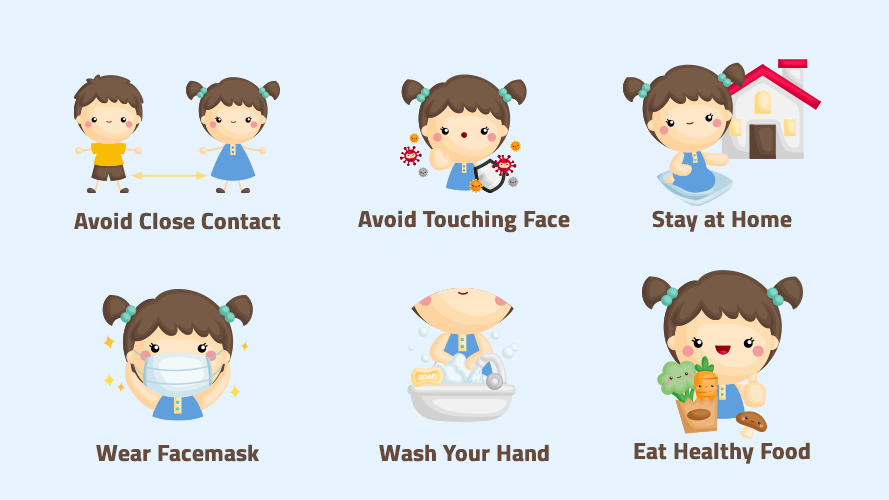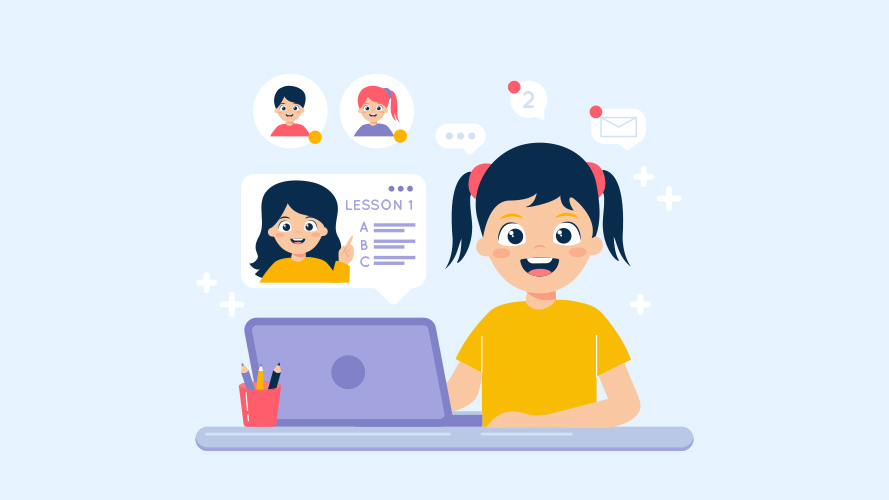Every one of us has a mindset about our own abilities and potential. And this mindset is so powerful that it will strongly influence how we approach learning and problems in life, and can even predict success.
Psychologist Carol Dweck coined the idea of “fixed mindset” and “growth mindset”.
An individual with a fixed mindset gets stuck in the face of a challenge and has trouble moving ahead. An individual with a growth mindset, on the other hand, welcomes challenges as learning experiences and believes they can evolve with each one.
Which one do you think is likely to achieve more success in life? Which one do you want to develop in your child?
The answer is pretty obvious. What Dweck refers to as a “growth mindset” in a distinctive trait that she observed in people who are more successful in life and just happier in general.
Fortunately, Dweck informs us that no one is stuck in one mindset or another. Such a mindset develops based on our experiences. But the qualities of a growth mindset can be cultivated in an individual through reinforcement and practice.
It’s extremely important to cultivate these qualities in a child because it’s easier for people to be molded when they are younger. Further, the more practice they have with it, the better equipped they will be to face challenges when they grow up. And it all starts with their learning in school.
This post is going to talk about just how to teach growth mindset to kids.
What are Growth and Fixed Mindsets?
First, let’s take a quick look at the characteristics of each mindset. As you will see, there is a general difference in perspective between these them.
Fixed mindset characteristics:
- They believe that intelligence, creativity, and personality are things we are born with and set in stone. They believe these qualities cannot be developed.
- They fear failure. They view mistakes as failures rather than opportunities to grow and learn. In fact, hitting an obstacle becomes proof to them that they are incapable of overcoming it.
- They may fear new experiences and avoid risks.
- They look for external rewards to drive performance and feel the need to repeatedly prove ourselves over and over again.
- A fixed mindset sounds like this: “I’m just not smart”, “I’m not good at this”, “I’m not going to get it, so why even try”.
Growth mindset characteristics:
- They believe that intelligence, creativity, and personality can be cultivated through effort.
- They are not afraid of failing. They view failure as a springboard for growth.
- They show a willingness to confront challenges and.
- They exhibit a passion for learning and are self-motivated to find out new things.
- A growth mindset sounds like this: “I wonder what else I could find out about this”, “I know I can figure this out”, “I get what I did wrong and can fix it”, “That was tough, but I’ll do better next time”.
Now let’s get into what you can do to develop a growth mindset in your child. If your child already strongly exhibits growth mindset qualities, then you can use these tips to make sure you reinforce them.
Talk about the brain
Teach your kids that the brain is pliable and it can change with effort and practice. Download this idea into them! You don’t need to be a neuroscientist to do this, and neither do they. You can even instill a growth mindset in early learners by telling them in a way that is appropriate to their age that the brain is like a muscle, and we can make it stronger with dedication, practice, and consistency.
Avoid labeling your child and others
From the outset avoid giving labels, whether it’s a good label (You are so smart!) or a negative one (Don’t be a lazy bones!). Labels put them inside a box and promote a fixed mindset.
Let them make mistakes
Be comfortable with allowing your child to make mistakes, it’s good growth mindset parenting. No one likes to see their child fall, but sometimes that’s what is required for them to learn. It’s like the proverbial “letting go when teaching them to ride a bike”. You can’t run with them forever!
Give them permission to fail
This sounds like the previous point, and in fact, it ties in closely with it. But while the previous point is more for you, this is more for your child. Giving them permission to fail means taking the anxiety out of learning. It will help expand their creativity and grow their readiness to embrace challenges and take risks. Because failing is a natural part of learning anything. Be cool with it.
The power of “YET”
It’s a tiny, three-letter word with a huge impact. Studies have shown that using the words “yet” and “not yet”, when a child encounters a setback, increases their confidence and persistence.
How does it work? It simply transforms fixed mindset phrases to growth mindset phrases. So, “I am not good at this” becomes “I am not good at this YET.” The word “yet” indicates that there is a learning curve, and points to the importance of the process rather than the outcome.
Praising the process, not the child
Praising your child is important, but it is important to praise in the right way.
- Simply praising your child for doing well reinforces a fixed mindset. You must resist the temptation to just say, “Great job, you are smart!”
- It is also ineffective to blindly praise the effort. This will lead your child to believe that if they try hard enough, they will succeed no matter their strategies. This could lead them to repeat the same futile strategies over and over again. Resist the urge to be reconciliatory and just say, “At least you tried!”
- Process Praising:This is the kind of praise that we want to aim for. It focuses on the way your child approached a challenge, and not how smart they are or how well they did. It shifts the focus from the end result to the process. So look at what your child did, how they did it, and praise that. You might say something like, “I really like how you checked your textbook for solutions, then asked your teacher, and then tried these two methods to solve this problem.”
This is not to say that effort and outcome are completely unimportant. But by giving importance to the process, you encourage your child to be more experimentative and to face failures.
Teaching them to watch their emotions
Learning is an emotional experience – and it’s not always a joyous one. Help your child understand their emotions, even the negative ones. Let them know that they are bound to feel frustrated at some point or the other in any learning process and that it’s OK. Children need to learn how to handle their emotions. This is a key factor in building resilience and reinforcing a growth mindset.
Read More– How to strengthen parent-child communication-relationship?
When they do well without effort
For a student who does really well without putting in any effort, it’s still important to resist making it all about their cleverness. Instead, Dweck suggests saying something like, “OK, that was too easy for you. Let’s see if there’s something more challenging that you can learn from.”Be balanced and wise with your praise!
Seek out challenges
Encouraging your children to find new challenges, and not stop at their school work. You can help by actively looking for growth mindset challenges for them to do. It doesn’t have to be difficult, and it can be tangential to school learning. Maybe you can buy them a book of Sudoku or crosswords, or something that is aligned with their interests. You might also want to contact your child’s teacher and ask if they are using growth mindset lesson plans.
Set a growth mindset example
Kids imitate their parents. So let them see you persisting with difficult tasks, trying to learn something new, and taking on challenges with enthusiasm. They will observe how you deal with obstacles and how you face failure, and they will imbibe at least some of these habits.
Developing a growth mindset is an ongoing process. Facing challenges in life is not easy, but it’s something that we have to do, and being equipped with a growth mindset is a great boon.
The effort will come from your kids, but it is important that we do what we can to encourage them and give them guidance.
Be wary of boxing them into a fixed mindset, whether through positive or negative statements. This might take an effort on your own part to start focusing more on process than outcome, but it’s well worth it for the effect it will have on your child.
Remember, in the end, growth mindset and fixed mindset applies to all of us, throughout our life. One of the best things we can do for our kids is taking this concept to heart and exemplifying it in our own lives.











